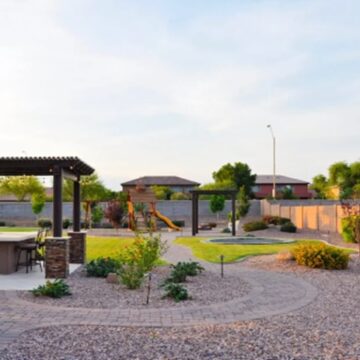You may love the summer for its warmth, sunshine, and vacation times. But the downside to this season? How much harder it is to make sure your house is comfortable. And while you don’t want to overheat, you also don’t want to blast the AC too much for your energy bill’s sake. So, what do you do? Read on below to find out what the average house temperature in the summer should be as well as some reasons why it’s important.
What Is the Average House Temperature Supposed To Be in the Summer?
The US Department of Energy recommends an average house temperature in summer of 78 degrees. If you don’t want to set it quite that high, it’s recommended to get as close to that number as is comfortable. The Department has more information and advice on average house temperatures on their website.
Why Does This Average House Temperature Matter?
When you don’t know the recommended temperature for the different seasons, you can spend a lot of time fussing and experimenting with the thermostat. Plus, you have to deal with a number of different factors. Especially if your family members all have different preferences. This can be incredibly frustrating and end up costing you more money.
What is one of the main reasons to follow these guidelines for average house temperature in summer? The way it impacts your home energy bill. It’s been proven that when you set your thermostat at 78 degrees, the savings can really add up. Blasting the AC can use far more energy than you realize. In addition to saving you quite a bit of money, keeping the thermostat at that temperature is also better for the environment.
What If That Sounds Too Hot for Me?
Some people recoil at the suggestion of a 78-degree average house temperature in summer. They may think it’s too close to the temperatures outside to really provide any comfort. But the US Department of Energy actually recommends you have as little difference between indoor and outdoor temperatures as you can handle.
So how do you set that average house temperature in summer without feeling too hot? Well, don’t underestimate the impact of different cooling elements.
What Are Some of the Other Ways to Cool Off Your Home?
To start, humidity levels can have a pretty big impact on your comfort. Humid weather can feel quite stuffy. It can also make the temperature feel higher than it actually is. The right HVAC system should help take care of that humidity.
How do you know that your HVAC system is contributing to keeping your home at the right temperature? Something that many people can overlook is the size of the system. If it’s too big for your home, it might not be as effective at dehumidifying. You can also use a separate dehumidifier in addition to the air conditioning.
Direct sunlight can make your home feel even hotter. Thankfully, there are treatments you can apply to the windows to limit how much sunlight comes through.
Another issue might be that the weather-stripping around your doors and windows is worn down and needs to be replaced. This can allow heat from outside to seep in.
Also, if you can, limit the use of heat-generating appliances such as ovens and stoves. Or at least don’t use them as much throughout the day, just at dinnertime. Many prefer to make meals on the grill outdoors during the summer instead of using the stove indoors.
All of these choices can allow you to maintain that average house temperature in the summer and reap its benefits, all without worrying about being too hot.
What About Fans?
In most cases, ceiling and window fans can cool down the house by at least four degrees. So you can keep the thermostat at that energy-saving temperature of 78 while also feeling comfortable.
Do you need to replace your fan? Then you can actually make some choices that will enhance its ability to keep you as cool as possible. For extra energy savings, look for fans that have the ENERGY STAR label. If a fan has this label, it will usually be at least 20 percent more energy-efficient than fans without that label.
To save even more, turn off fans when you’re out of the house or even individual rooms. And you should also adjust the temperature if you’re not home as well.
What If I’m Out of the House?
If you’re going somewhere and the house will be empty for at least a few hours, it’s actually recommended to turn up the temperature on your thermostat a few degrees higher than 78.
You may be confused and even shocked by this. But it can save you roughly 10 percent on your energy bill. And don’t worry, this doesn’t mean you’ll be melting when you return to your home. The higher temperature actually slows the flow of the heat. So this means it won’t take a lot of time and energy to cool the house back down when you return to the recommended summer average house temperature.
Look into a Programmable Thermostat
If you don’t like to constantly adjust and worry about your thermostat, this is where a programmable thermostat comes in handy. More and more people are switching to this high-tech option. One of the many advantages of programmable thermostats is that you can control them remotely. So you can turn down the temperature before you arrive home. Then, once you get there, it’s already at that preferred house temperature. And don’t worry that the higher-tech means a higher price. It’s actually an affordable switch as well.
If you have any questions, suspect there’s an issue with your house temperature, or just want a checkup on your HVAC, don’t hesitate to contact us at Entek. With 75 years in business in Oregon and Washington, you can trust that we’re the experts on house temperature and other HVAC system matters. You can find more information on our website.
















